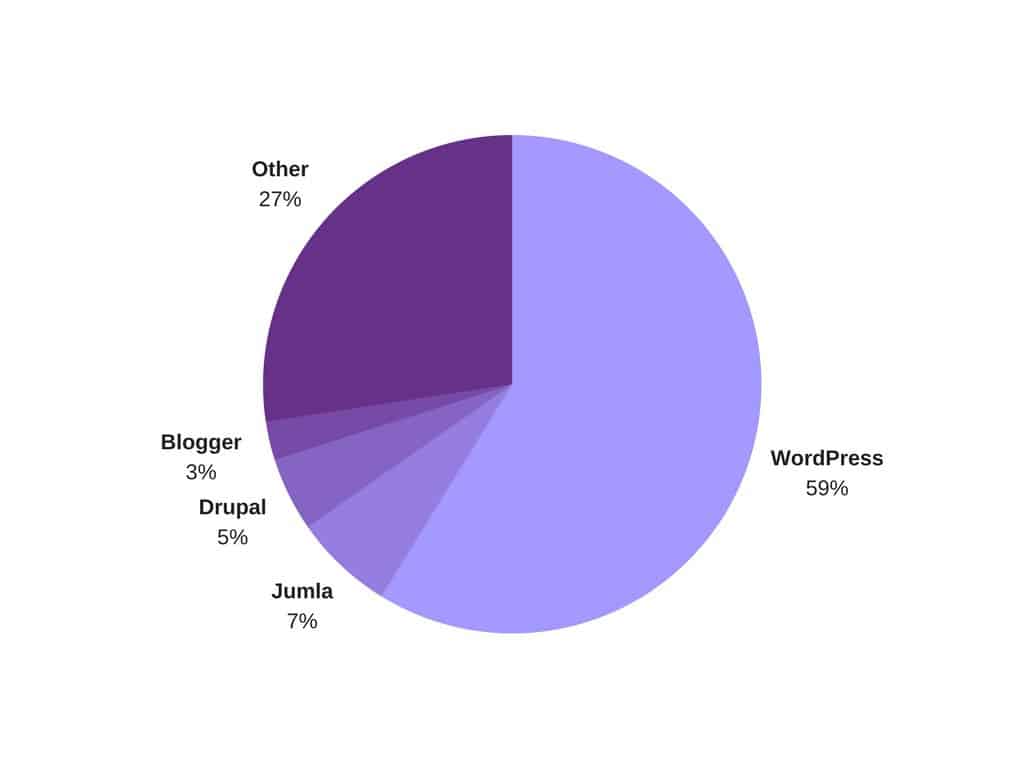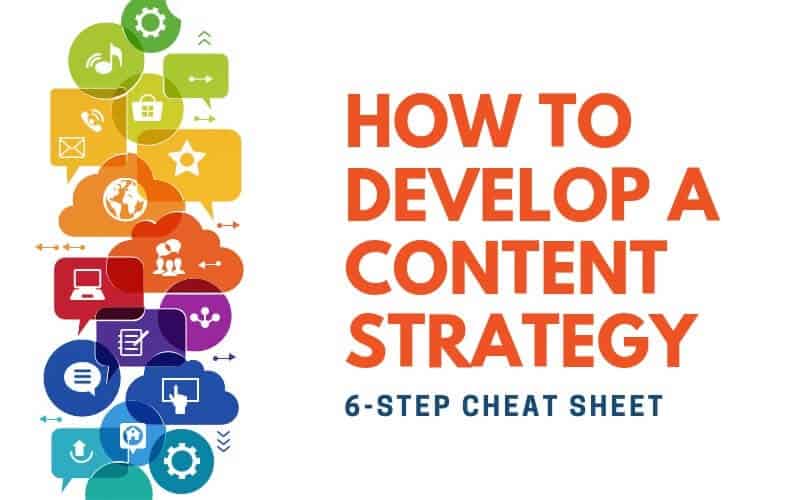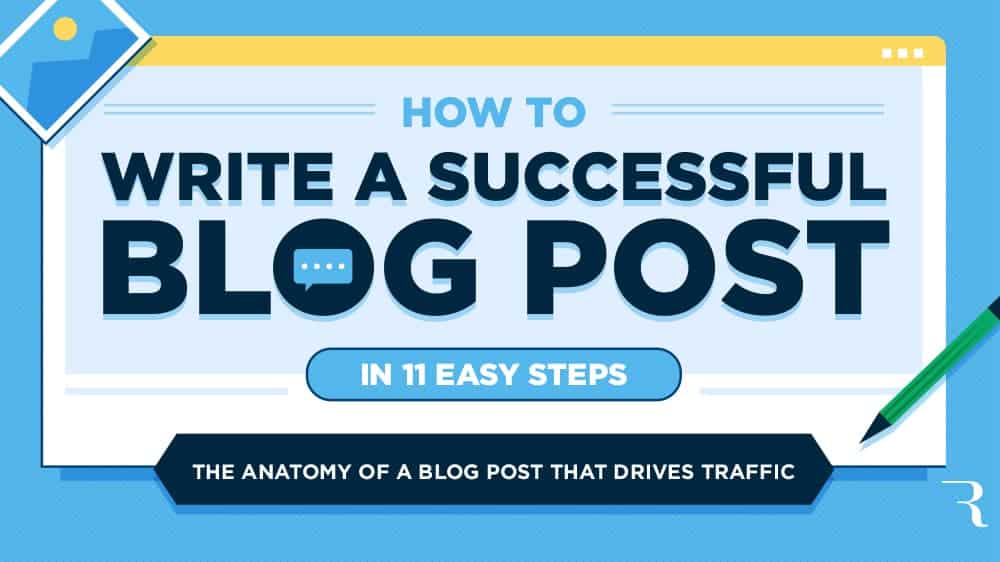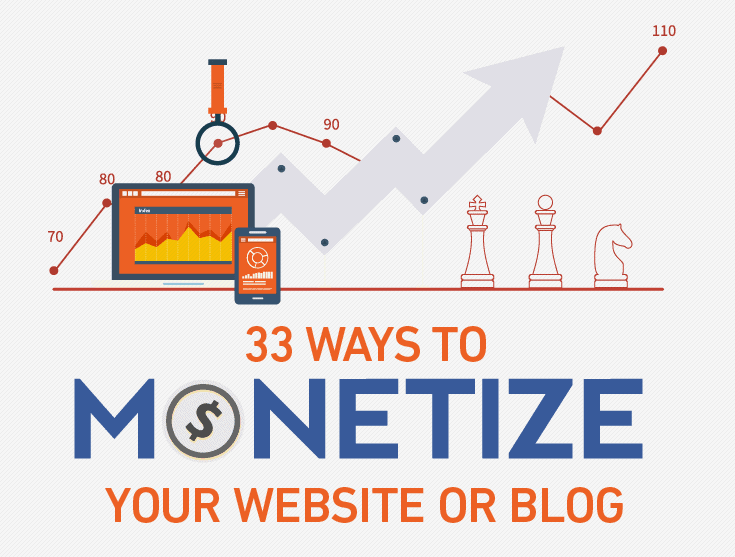Wondering how blogging works?
In this article you’ll discover:
- where blogging came from
- why blogging has become such a powerful business tool
- the key blogging strategies
- the best style and format for writing blog posts
- how to monetize a blog
History of Blogging
Blogging transformed the Internet.
I created my first website in 1999.
Back then there were no drag-and-drop page builders. If you wanted to create a new page you had to code it yourself.
And that meant you had to know HTML (the first online course I ever took was a course in HTML).
Creating a new web page was a lot of work. And they were difficult to update. So websites were basically static.
But in 1998 ‘weblogs’ started appearing.
Unlike conventional websites, weblogs were like diaries. They had new content that appeared in chronological order on a homepage.
John Barger, creator of the Robot Wisdom blog, is usually credited with coining the word ‘weblog’ in 1998.
The next year, in 1999, Peter Merholz jokingly shortened ‘weblog’ to ‘we blog’ in the sidebar of his ‘blog’. That’s how the word ‘blog’ was born.
Five years later, in 2004, the Merriam-Webster dictionary named ‘blog’ the word of the year.
The First Blogging Platforms
One of the first blogging platforms was LiveJournal.
It was created by programmer Brad Fitzpatrick as a way of keeping his friends up-to-date on his activities.
Blogger was next, created by Evan Williams and Meg Hourihan.
Another early blogging platform was b2/cafelog.
When it was discontinued in 2003, Matt Mullenweg and Mike Little got together and built a new platform.
And that’s how WordPress was born.
Blogging Goes Mainstream
From 1999 to 2006 there was an explosion in blogging.
To give you some idea of how rapidly it took off: in 1999 there were a total of 23 blogs. By 2006 there were 50 million!
Publishing on the web was suddenly within reach of everyone – it was as easy as writing an email.
By 2010 there were 152 million blogs.
Today, in 2017, there are over 440 million blogs.
The Arrival of Commenting
In 1998 OpenDiary introduced reader comments, giving visitors the ability to leave comments on someone else’s post.
This brought about another revolution:
Not only were websites now dynamic (i.e. they could be updated several times a day) they were now two-way conversations:
Readers could interact with writers!
This increased the level of trust (something that had been badly lacking on the Internet before 1999).
It created the conditions for some bloggers to build massive followings of loyal readers.
Large followings of loyal fans who are engaged with your writing and trust your opinion are a marketer’s dream come true.
And so blogging took on its next manifestation – as a marketing tool for online business.
FURTHER READING
- WebDesignerDepot – A Brief History of Blogging
- Amanda Zantal-Wiener – A Brief Timeline of the History of Blogging
- Jay Hoffmann – The Evolution of Blogging
Blogging As a Business
As we saw above, a blog can be a powerful business tool, a way of bringing in a constant stream of new leads and new customers.
For example, a pool builder might write blog posts about the different types of swimming pools he installs. A camera shop might write blog posts about different photography techniques.
Very often you’ll see websites with a menu item titled ‘Blog’.
These are often websites that are not primarily blogs. Typically, they offer a product or service and use blogging to extend their reach.
How Can a Blog Help Your Business?
So how exactly can blogging help an online business?
The main benefit is that blogs are built upon fresh, regularly updated content.
And that’s the kind of content that search engines like.
So blogging regularly within your industry niche is going to help your business get its website on Page #1 of the search engine results (SERPs) for the keywords associated with your industry.
Now, getting your website on the first page of the SERPs is not as simple as writing blog posts within your niche.
The competition to get on Page #1 is fierce!
Blogging and SEO
And that’s where SEO comes in, Search Engine Optimization.
But the mere fact of having a blog on your business website is going to help you get listed.
Why?
Because a blog website is much more ‘SEO friendly’ than a static website.
Beyond the traffic, the leads, and the potential customers that a blog can bring to your business, a blog is also a way of:
- Establishing yourself as an industry expert
- Injecting personality into your website
- Keeping your visitors on your website for longer
Blogging About Blogging
Alternatively, blogging can be a business in itself: a blog about blogging.
This is a whole industry in itself, with various specialized niches:
- Branding Your Blog
- Setting up Your Blog
- Getting Traffic to Your Blog
- How To Write Blog Posts
- WordPress Plugins
- List Building for Bloggers
- Blogging Platforms
- Creating Blog Graphics
- Copywriting For Bloggers
- Monetizing Blogs
- Finding a Niche For Your Blog
FURTHER READING
- Ramona Sukhraj – Blogging for Business? Everything You Need to Know
- Aaron Orendorff – The 5-Point Survival Guide to Blogging as a Business
- Corey Wainwright – 10 Amazing Blogs About Blogging
Blogging Platforms
WordPress dominates the market in blogging platforms.
As the graphic below illustrates, nothing else even comes close:

Website Setup reports the following figures for market share in blogging platforms in 2016:
- WordPress (58.8%)
- Joomla (6.5%)
- Drupal (4.8%)
- Blogger (2.5%)
- Magento 1.5%
- TYPO3 (1.5%)
- Bitrix (1.4%)
- PrestaShop (1.3%)
- Shopify (1.3%)
- SquareSpace (1%)
With over 20 million active websites, WordPress has generated a whole ecosystem around its blogging platform.
And that in itself brings huge advantages.
For example, on the WordPress platform you can get a plugin – usually free – to do virtually anything (a plugin is an add-on that extends the functionality of WordPress).
At time of writing there are 53,133 WordPress plugins that you can choose from.
All of this means (in my opinion) that deciding on a blogging platform is not a difficult choice. It’s got to be WordPress!
FURTHER READING
- Matthew Woodward: How To Start A Blog THE RIGHT WAY In 2018
- WPBeginner: How to Choose the Best Blogging Platform in 2017 (Compared)
- BloggingBasics101: Choose the Best Blogging Platform – Comparison 2017
- Roshan Perrera: Top 15 Blogging Platforms – A Detailed Comparison

(Source)
Blogging Strategies
Blogging strategy usually refers to one of two things:
- Getting more traffic to your blog
- Converting your existing traffic to subscribers and / or customers
Getting Traffic
When bloggers talk about strategies for getting more traffic to your site, they very rarely mean paid advertising.
After all, that’s the whole point of blogging: producing high quality content within a specific niche, on a regular basis, as a means of attracting leads and potential customers.
For bloggers, getting more traffic usually boils down to one of these two basic strategies:
- Using your content to get organic traffic from the search engines
- Using your content to tap into the traffic of other blog sites.
Of course, each of these two basic strategies covers a whole range of more specific strategies.
For example, here are some of the sub-strategies that come under the heading of getting more organic traffic form the search engines:
- Keyword Research
- Long Tail Keyword Research
- Competitor Keyword Research
- Building Backlinks
- Broken Link Building
- Resource Page Link Building
- Weekly Roundup Link Building
- Building Topical Authority
- On-page SEO
- Off-page SEO
And here are some of the strategies that can be used to tap into other people’s traffic:
- Guest Posting
- Webinars
- Joint Ventures
- Expert Roundup articles
- Interview articles
- Link Roundup articles
- Top 10 Influencer articles
Converting Your Traffic
Converting traffic into customers usually involves, as a first step, turning visitors into subscribers.
The reason for this is simple:
People vary rarely buy something on first exposure. So you need a way to stay in contact with them and bring them back to your website.
And that’s the purpose of a list.
Getting someone to join your list is usually the first stage in a blogger’s conversion funnel.
With good use of segmentation, sales funnels can become sophisticated and very effective tools for delivering the right message to the right people at the right time.
What is segmentation?
It’s simply the process of dividing a market of potential customers into groups, or segments.
These are some of the segments a blogger might use to better match the message to the needs of the reader:
- Interests
- Age Group
- Gender
- Geographic Location
- Stage in Buying Cycle
- Problems or Challenges Prospect is Facing
- New Customer or Existing Customer
Other techniques bloggers use to convert visitors into buyers are:
- Copywriting
- Testimonials
- Case Studies
- Live Chat
FURTHER READING
- Blog Tyrant – A Proven Blogging Strategy that Works in Any Niche
- Will Blunt – How to Create a Successful Blog Strategy: A Step-by-Step Guide
- Nicholas Tart – The Most Advanced Blogging Strategy I’ve Never Shared

(Source)
Blog Writing
According to Statistic Brain our attention span is constantly shrinking.
In the year 2000 the average attention span was 12 seconds. But by 2015 it had gone down to 8.25 seconds.
To put that in perspective, the average attention span of a goldfish is 9 seconds!
This ever-shrinking attention span is putting pressure on blog writing.
Moz reports that 80% of readers never make it past the headline of a blog post.
Engaging Your Readers
The fact is, to get someone to even start reading your blog post (let alone make it to the end) you have to write in a completely different way to how most of us were taught.
You literally have to grab your reader with your opening line, sometimes called the hook.
And you’ll have to engaging transitions every couple of paragraphs to literally pull your reader down the page.
The best example of this kind of writing (that I know of) is Brian Dean over at Backlinko.
Notice how his whole blog post is almost a conversation with his reader. His sentences are rarely more than 10 words long. And his paragraphs are 1 or 2 sentences at most.
Brian Dean’s writing is so effective that he’s managed to build a blog that gets over 100,000 unique visitors a month with less than 50 blog posts!
Popular Blog Post Types
Here are some of the most common types of blog posts:
Listicles
Listicles are hugely popular, as the people at BuzzFeed can tell you!
Why so popular?
Because they’re easy to read – simple as that.
But they’re also easy to write because the structure is simply the list of items that you’re going to discuss. What could be simpler?
Expert Roundups
Expert roundups are a great way to get on the radar of Influencers within your niche.
Just contact 10 to 20 leaders in your industry and ask them a simple question, such as:
- what are your 3 favourite tools for ____
- what’s the one piece of advice you wish you’d had when you started out
- what’s the biggest mistake you see beginners making
Once the article is live, let the contributing experts know. Chances are they’ll share it with their followers on social media (and some of them have huge followings!).
Link Roundups
A link roundup is a post that brings together the best articles on a particular topic, with a link to each.
Again, let the authors know their post has been included. With any luck they’ll share it with their subscribers / followers.
Definitive Guides
Long-form content (over 2000 words) ranks much higher on Google. So a Definitive Guide of 3,000 to 5,000 words is more likely to get on Page #1.
Also definitive guides tend to be evergreen content. So they’ll keep sending you a steady stream of targeted leads.
Interview Posts
Interview articles work well because experts love to see themselves in the limelight.
Do your interview by email or live. Once published it’s almost guaranteed the person you interviewed will share it with their followers on social media.
Lots of free traffic!
Top List Posts
People like top list posts because they can read them quickly and they promise to deliver something we’re all looking for – the best of whatever it is we’re interested in.
Someone who has generated masses of traffic using this type of blog post is Michael Dunlop of IncomeDiary.
FURTHER READING
- Michael Dunlop – How I Get Over 100 K Visitors a Month With Top List Articles
- Liz Longacre – How to Write a Blog Post – The Ultimate Guide
- Tom Ewer – The Blogger’s Style Guide: How to Write Stellar Blog Posts
(Source)
Monetization Your Blog
Monetization is a key part of understanding how blogging works.
Bloggers generally monetize their sites using one or more of the following strategies:
- Ad Networks
- Affiliate Links
- Their Own Products
- Their Own Services
Ad Networks
The revenue per click from ads is so minuscule that unless you have huge amounts of traffic, you’re not going to make any serious money from displaying ads on your website.
I wouldn’t bother with ads. They are the least effective way of leveraging your traffic. And in return, your website ends up looking like a junk yard.
Affiliate Marketing
This is a strategy that many bloggers have used with great success.
An example is Pat Flynn of Smart Passive Income.
He built his blog (which now generates $145,000 a month) entirely through recommending affiliate products to his readers.

“If you want to become a big affiliate marketer you absolutely need an email list. That is your customer base.
Without one, you’ll just be another hit-and-run affiliate marketer working for peanuts”
-John Chow
Create Your Own Product
Creating your own product – an eBook or an online course – is another way of monetizing your blog.
The main issue with selling your own product is pricing.
Let’s say you create a video course and sell it for $97.
To make $100,000 you have to sell 1000 units.
Let’s assume a conversion rate of 1%. That’s a lot of traffic you’re going to need.
And then there’s customer support for 1000 buyers – a lot of work if you’re a one-person team.
But let’s say you create an online video course with 12 modules and you price it at $970.
Now you only need to make 100 sales a year to make the same amount of money as the $97 product.
That’s a lot less traffic that you need and a lot less customer support.
This is why a big-ticket item is often the best monetization strategy for intermediate bloggers who don’t have large volumes of traffic.

“You make the majority of your money from subscribers. Subscribers are people who have been exposed to your work and enjoyed it so much that they have signed up for more. They say yes to your offers, become customers, members, and raving fans willing to pay to be involved with you.”
-Yaro Starak
Mentoring / Coaching
Coaching is a great monetization strategy for bloggers in their second or third year of blogging.
Let’s say you have 5 coaching clients at any one time and you charge $100 per hour and manage to get 20 hours of work a week.
That’s $2000 a week or $104,000 a year.
Again, it’s the same principle we saw above: you need fewer customers and therefore less traffic.
And because you have fewer customers you spend less time in customer support.
But more than that: coaching is an excellent monetization strategy for intermediate bloggers.
Why?
Because it gives you a special insight into the problems and challenges being faced by your readers.
Once you’ve coached 10 to 20 customers, you’ll have a very good idea what your readers’ stumbling blocks are.
And that puts you in a very good position to create a high-priced product that solves exactly those problems.
FURTHER READING
- Matt Smith – 30 Ways To Monetize Your Blog & Make Money Blogging!
- Michael Dunlop – How to Monetize a Blog
- David Risley – Top 10 Blog Monetization Strategies, Ranked In Order (2016 Edition)
Conclusion
That’s the big picture of how blogging works.
In a nutshell, it’s about getting traffic, converting that traffic into subscribers, providing valuable content to those subscribers, and then offering them products (your own or other people’s) that will help them get where they want to go.
Frequently Asked Questions
What exactly is a blog?
A blog (short for weblog) is a website that gets updated on a regular basis (e.g. daily, weekly, monthly). The new content – in the form of blog posts – gets added to the front page of the blog in reverse chronological order (most recent posts at the top).
When the internet was in its infancy, there were no page editors and if you wanted to add a new web page you had to code it yourself using HTML. This meant that websites were static. And then along came blogging, and websites became dynamic.
The word ‘blog’ is also used to refer to a blog post. In that sense, a blog is a single page on a blogging website.
What is a blog post?
A blog post is an article written for a blog. In WordPress, a blog post differs from a page because blog posts contain fresh content that gets added to the website on a regular basis (e.g. daily, weekly, monthly) whereas a web page is static content that doesn’t get updated on a regular basis.
What is a blog used for?
The very first blogs were simply diaries or journals (hence the name ‘weblog’). In about 2005 blogging began to go mainstream. Blogging has now gone from being an activity of hobbyists to an essential tool for online business.
A business blog is used to build a following of readers who are potential customers for the products or services of the website.
Do bloggers get paid?
Although most bloggers (around 80%) make little to no money from their blogs, a small percentage of blogs make considerable amounts of money.
Profitable blogs create free content that they use to build traffic to their websites. They then ‘monetize’ that traffic using advertising, promoting affiliate products, or marketing their own products and services
More Articles About Blogging
- 7 Powerful Blogging Tips To Help You Succeed In 2022
- 19 Experts Reveal Their Top Tips For First Year Bloggers
- 27 Experts Reveal Their Most Powerful Blog Promotion Technique
- The 7 Business Models of Highly Successful Webpreneurs
- How To Set Up Your Own Blog (From Start To Finish)
- Three Blogging Strategies To Help You Succeed In 2022
- Newsjacking – How To Get Traffic and Backlinks From Breaking News
- Does Your Blog Need A Niche in 2022?
- Best Blog Names – 19 Great Ways To Name Your Blog
- Blogging 101 – How To Start A Successful Blog in 2022
- 3 Ways To Quickly Find a Blogging Niche You Won’t Regret
- How To Turn Articles Into Videos – 7 Tips You Need To Know
- Publishing on Medium – How To Add 13,000 Subscribers in 6 Weeks
- How To Succeed In Your First Year of Blogging
- 13 Surprising Facts About Blogging You Shouldn’t Ignore
- Ryan Biddulph On Blogging For Fun and Finding Success

Dear Rob, The more I am reading your insightful posts, the more I am improving on my skills to great blogging.. Thanks for the wonderful tips and a great way of writing.
Thank you Sanjay! It’s wonderful to get feedback like that. I’m glad the content is useful.
Best, Rob.
Hi Eniola, thanks for your feedback, glad it was useful.
Best, Rob
Thanks for sharing this blog post especially about how the word blog was born it really inspired me
Hey Busayo, thanks for the feedback. All the best with your blog, Rob.